https://theweereview.com/interview/shane-strachan/
Shane
Strachan
We chat to the writer behind a new
fictionalised account of Muriel Spark’s life in the former Southern Rhodesia.
INTERVIEW / SHANE
STRACHAN
RAE
COWIE | 17 NOV 2018
Shane Strachan has
been writing short fiction in the North of Scotland for several years while
working on theatre projects with the National
Theatre of Scotland and Paines Plough. This year has seen him receive a Robert Louis Stevenson Fellowship from the Scottish Book Trust to work on a novel inspired by the
life and work of fashion designer Bill Gibb, and also mentor on the Queer Words
project from which a new anthology We
Were Always Here will
be published by 404 ink in
January 2019. In September, he also published a collection of short fiction as
part of the 2018 Muriel Spark centenary
celebrations. The collection Nevertheless: Sparkian Tales in Bulawayo, is published by
Zimbabwe-based publisher amaBooks and explores Spark’s years in former
Southern Rhodesia alongside a modern-day narrative.
When did you first
become interested in Dame Muriel Spark and her work?
Like many people, my main engagement with
Spark had been with The Prime of Miss Jean Brodie, which
I read as part of my degree and went on to teach to undergraduates at the
University of Aberdeen. What always surprised me about such a slim novel was
that at first it seems like a straightforward schooldays story, but each time I
re-read it I’d uncover another layer of complexity and another way of
interpreting the events that unfold. I read a few more Spark novels around that
time, but it was the centenary celebrations that led to me uncovering Spark’s
connection with Africa and the fantastic short stories she wrote in response to
her time there.
Nevertheless:
Sparkian Tales in Bulawayo is a new collection of short fiction pieces
you were commissioned to write. Can you explain how this came about? Tell us a
little of the research required?
In response to Creative Scotland’s call-out
for new projects, I discovered that Spark had given birth to her son in the
same hospital where I’d previously ran an arts-in-health project in Bulawayo,
Zimbabwe. It was all very serendipitous and unexpected. Spark’s connection with
Bulawayo opened up the door for me to finally be able to write stories about my
own impressions of Zimbabwe after a couple of years of feeling unsure about how
was best to approach them.
Alongside reading a lot more of Spark’s
works, particularly her short stories, the research was primarily digging
through the extensive Spark archive at the National Library of Scotland,
which was one of the key aims of the Endless Different Ways grant – to shed light on this archive and to
explore ways it could be used creatively. I also did a fair amount of reading
about Southern Rhodesia in the 1930s and 40s, as well as academic essays on
Spark’s stories set in Africa, especially their exploration of female
experiences in the colonies during this time.
Which interesting
titbits did you find in the National Library of Scotland archives that
didn’t make it into these stories?
The thing that stood out to me most was that
Spark seemed to do a fair amount of her own research on what life was like in
Africa at the time she lived there. It was as though she didn’t quite trust her
own memories to be accurate, which is understandable given how young she was
when she was there and how traumatic a time she had. This sense of trauma was
also clear in several post-its in the archive which start to tell something
about her past, then cut off unexpectedly. To write about her own experiences
for her autobiography Curriculum Vitae, I get the
sense that Spark was in a sense already treating this time like a work of
fiction, stitching together the fragments of memories she could recall with
facts from encyclopaedias to make it as authentic as possible for the reader.
You’ve visited the
city of Bulawayo, Zimbabwe, which is twinned with Aberdeen, a number of times.
How many of your experiences did you share with Duncan, the young doctor who
features in your stories?
The Duncan stories were something of a
vehicle to share some of my own experiences and impressions from my visits to
Zimbabwe, particularly the awkwardness I suddenly re-felt around my sexuality
in a culture where it’s predominantly frowned upon or misunderstood. However, I
heightened a lot of this in the fiction for the sake of bringing about more
dramatic tension – Duncan is even more stifled than I ever felt, and much more
affected by the experience of hiding part of himself away. I wanted to heighten
this so that there is a sense of release near the end of his story when he
realises that a lot of his fears have been unfounded, or rather, come from an
overly anxious white British perspective, rather than the reality of everyday
lived experience in Zimbabwe.
As well as this, both Spark and Duncan move
through places and spaces that I myself visited while in Zimbabwe. I
particularly wanted to get across the beauty of the country, especially in the
national parks and at Victoria Falls, places that greatly impacted on Spark’s
sense of wonder and spirituality.
Overall, it’s worth saying that of course
Duncan isn’t me, and my version of Spark isn’t 100% the real Spark. Stories
take on their own life and sometimes the sentences that appear on the page are
unplanned and unexpected, but are necessary for finding a new “truth” as such.
This tension between fact and fiction is something I’m continuing to explore
through my current work-in-progress, a novel based on the life and career of
fashion designer Bill Gibb.
All proceeds from
the sale of Nevertheless go to The Lady
Rodwell Maternity Hospital in Bulawayo. How will the money raised improve
conditions?
Since writing the stories, the political and
economic situation in Zimbabwe has worsened meaning that food, medical
supplies, and various other essentials are not getting into the country due to
a currency crisis, so it’s very hard right now to say in what ways the money
from Nevertheless will be used in these testing times,
but I’m sure the hospital will put it to use in the areas of most need. The
situation in Zimbabwe is rarely covered in the UK press, but a LinkedIn blog by Zimbabwe-based writer Cathy Buckle has been providing the greatest
insight for me of late.
Finally, Nevertheless:
Sparkian Tales in Bulawayo was created as part of a project to remind
readers of the importance of the legacy Spark left to Scottish literature.
After reading Nevertheless, where should
readers who wish to try Spark’s work begin?
I would definitely recommend Spark’s short
stories, particularly the ones inspired by her time in Africa. If readers want
to know more about what happened next to Spark, her autobiography Curriculum
Vitae covers her life
from childhood up to the publication of her first novel. My own favourites of
her novels are The Comforters, The Driver’s Seat and Memento Mori, but there’s
so much more to read and explore, and Spark fans tend to mention a different
book from each other when asked for their favourite!
Nevertheless: Sparkian Tales in Bulawayo is available in paperback online from africanbookscollective.com or as an ebook
from amazon.co.uk, with all proceeds of sale being donated to the Lady
Rodwell Maternity Hospital in Bulawayo.




















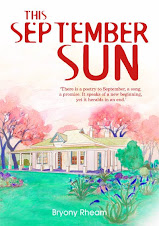.jpg)



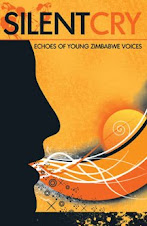
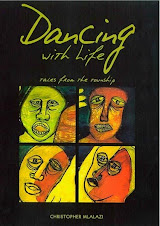

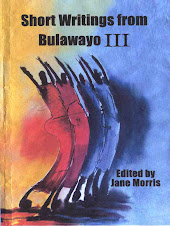


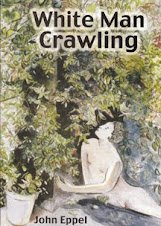










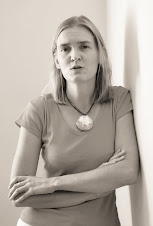.jpg)





















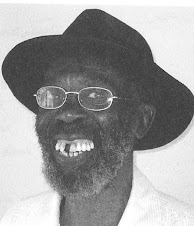





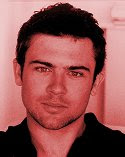
No comments:
Post a Comment